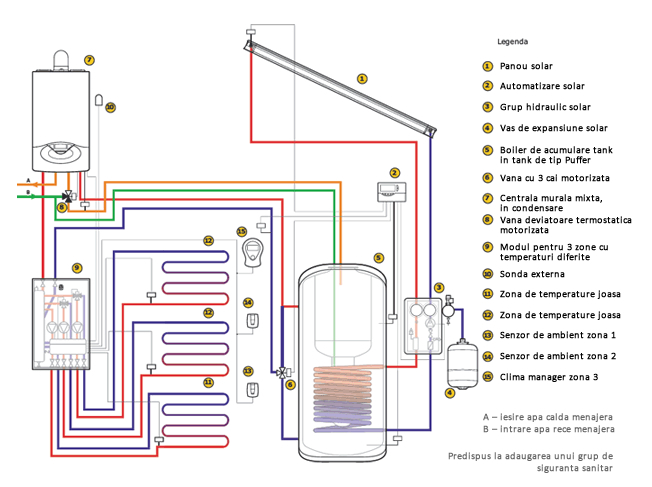
About solar panels
The use of photovoltaic panels has many advantages among which we mention:
- uses an inexhaustible source of fuel to produce electricity;
- Solar energy is available almost anywhere in the world, users are not limited to certain geographical areas or easily accessible areas with means of transport;
- The entire system of electricity production is very easy to install;
- offers operational safety (there is no danger of ignition or explosion);
- the panels have a long life span of over 20 years;
- allows the use of electricity in isolated areas, inaccessible to the national energy system, or at great distances from it;
- Due to the flexibility of designing solar energy production systems, panels can be placed in almost any type of space, without the need to build special supports or spaces.
- the panels do not require special maintenance, and a regular cleaning of the air deposits is sufficient;
- maintenance and operating costs are minimal;
- are environmentally friendly and environmentally friendly, their use leading to a decrease in the use of other fuels, pollutants and expensive;
- Their use does not produce noise, thus not polluting the atmosphere.
Such a photovoltaic panel consists of:
- a sheet of safety glass monostratated protection - this represents the face exposed to the sun;
- a fixing layer for solar cells; it is made of transparent plastic - ethylene vinyl acetate, EVA or silicone rubber - and has the role of protecting the cells from the weather, hoses and ultraviolet radiation;
- solar cells - monocrystalline or polycrystalline - connected to each other by treadmills;
- laminated sheet of weather-resistant plastic material, with the role of protection and closing of the system on the back of the panel;
- The connection socket provided with the protection diode (respectively the short-circuit diode) and connection.
Depending on the needs of the consumer and the location chosen, these systems can be of two types, namely:
- photovoltaic systems connected to the grid
- independent photovoltaic systems.
Independent photovoltaic systems
Independent photovoltaic systems are designed to be located in hard-to-reach locations, where the national power grid is not available. The current is produced only during the day, when it is sunlight and very little at night. The current produced by the solar panels is injected directly into the user's electrical circuit. Surplus power should be stored for use at night or whenever needed. Therefore, such a classic system is composed of:
- solar panels, which can be one or more, depending on the user's needs;
- one or more battery charging regulators. They have the role of protecting the batteries, preventing them from being overcharged, as well as from improper discharge.
- a battery pack of 12, 24 or 48 V DC,
- an inverter, which converts the DC DC produced into AC AC.
 Photovoltaic systems connected to the grid
Photovoltaic systems connected to the gridThese systems are used to reduce the electricity consumption coming from the national network and, at the same time, offer the possibility of delivering the surplus to the conventional network. Because these systems produce a lower current than necessary to charge the batteries, they are eliminated, the surplus used in charging them is transmitted to the network. Thus, these systems are composed of:
- photovoltaic panels for network connection,
- inverter for network entertainment (transforms DC direct current into AC AC power),
- electric meter to measure the amount of energy produced and delivered to the grid.
Thanks to the materials and technologies used, these panels are lightweight and thus can be mounted in the most diverse places, such as the roofs of buildings, facades, on terraces or on the ground.
Copyright © 2025 AMPERA Solar System - Solar Panels Craiova | All rights reserved.
For more enjoyable browsing, this website uses cookies . By continuing to browse, you agree to the use of cookies.

